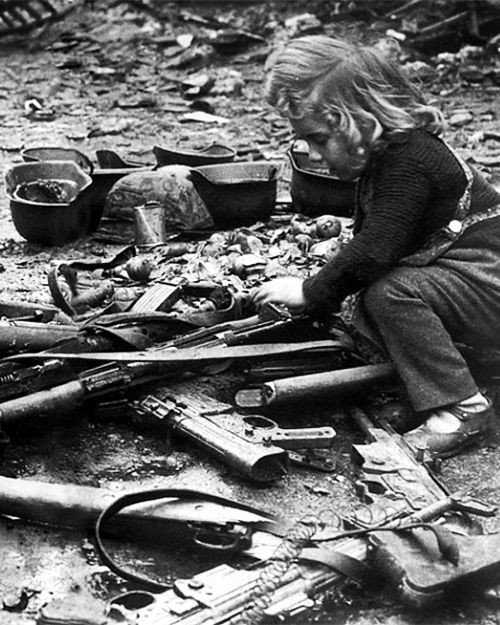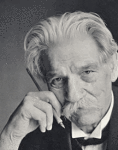By John Wear
Here is retribution on a large scale, but practiced not on the Parteibonzen [Party leaders], but on women and children, the poor, the infirm. The vast majority are women and children….
 One of the great tragedies of the 20th century was the forced expulsion of ethnic Germans from their homes after the end of World War II. The Allies carried out the largest forced population transfer—and perhaps the greatest single movement of people—in human history. A minimum of 12 million and possibly as many as 18.1 million Germans were driven from their homes because of their ethnic background. Probably 2.1 million or more of these German expellees, mostly women and children, died in what was supposed to be an “orderly and humane” expulsion.[1]
One of the great tragedies of the 20th century was the forced expulsion of ethnic Germans from their homes after the end of World War II. The Allies carried out the largest forced population transfer—and perhaps the greatest single movement of people—in human history. A minimum of 12 million and possibly as many as 18.1 million Germans were driven from their homes because of their ethnic background. Probably 2.1 million or more of these German expellees, mostly women and children, died in what was supposed to be an “orderly and humane” expulsion.[1]
Several Allied observers compared the fate of the German expellees to the victims of the German concentration camps. Maj. Stephen Terrell of the Parachute Regiment stated:
Even a cursory visit to the hospitals in Berlin, where some of these people have dragged themselves, is an experience which would make the sights in the Concentration Camps appear normal.”[2]
Adrian Kanaar, a British military doctor working in a Berlin medical facility, reported on an expellee train from Poland in which 75 had died on the journey due to overcrowding.
Although Kanaar had just completed a stint as a medical officer at the Bergen-Belsen concentration camp, what he witnessed of the expellees’ plight so distressed him that he declared his willingness to face a court martial if necessary for making the facts known to the press. Kanaar declared that he had not
spent six years in the army to see a tyranny established which is as bad as the Nazis.”[3]
Gerald Gardiner, later to become Lord Chancellor of Great Britain, had been a member of a volunteer ambulance unit working with concentration camp survivors. Gardiner stated in regard to the expellee trains arriving in the late summer and autumn of 1945 from the Recovered Territories,
The removal of the dead in carts from the railway stations was a grim reminder of what I saw in early days in Belsen.”[4]
Robert Murphy, a career diplomat who had served as Gen. Eisenhower’s political advisor and was now the State Department’s senior representative in Germany with the rank of ambassador, was aghast at the Allied mistreatment of the German expellees. Murphy states in regard to the German expellees:
In viewing the distress and despair of these wretches, in smelling the odor of their filthy condition, the mind reverts instantly to Dachau and Buchenwald. Here is retribution on a large scale, but practiced not on the Parteibonzen [Party leaders], but on women and children, the poor, the infirm. The vast majority are women and children….
Our psychology adjusts itself somehow to the idea that suffering is part of the soldier’s contract…That psychology loses some of its elasticity, however, in viewing the stupid tragedy now befalling thousands of innocent children, and women and old people….The mind reverts to other recent mass deportations which horrified the world and brought upon the Nazis the odium which they so deserved. Those mass deportations engineered by the Nazis provided part of the moral basis on which we waged the war and which gave strength to our cause.
Now the situation is reversed. We find ourselves in the invidious position of being partners in this German enterprise and as partners inevitably sharing the responsibility.[5]
An eyewitness report of the arrival in Berlin of a train which had left Poland with 1,000 German expellees aboard reads:
Nine hundred and nine men, women, and children dragged themselves and their luggage from a Russian railway train at Leherte station today, after eleven days traveling in boxcars from Poland.
Red Army soldiers lifted 91 corpses from the train, while relatives shrieked and sobbed as their bodies were piled in American lend-lease trucks and driven off for internment in a pit near a concentration camp.
The refugee train was like a macabre Noah’s ark. Every car was jammed with Germans…the families carry all their earthly belongings in sacks, bags, and tin trucks…Nursing infants suffer the most, as their mothers are unable to feed them, and frequently go insane as they watch their offspring slowly die before their eyes. Today four screaming, violently insane mothers were bound with rope to prevent them from clawing other passengers.
“Many women try to carry off their dead babies with them,” a Russian railway official said. “We search the bundles whenever we discover a weeping woman, to make sure she is not carrying an infant corpse with her.”[6]
Since the German expulsions were not given adequate press coverage, most people in the United States and Great Britain did not know there were any expulsions at all. However, it was undoubtedly Anglo-American adherence to the principle of population transfers that made the catastrophe of the German expulsions possible. The Allies had knowingly pursued a policy that would cause great suffering to the expellees, so as to generate an “educational” effect upon the defeated German population.[7]
 Albert Schweitzer expressed strong opposition to the German expulsions. Upon receiving the Nobel Peace Prize in Oslo on November 4, 1954, he made an appeal to the conscience of mankind to repudiate the crime of mass expulsions:
Albert Schweitzer expressed strong opposition to the German expulsions. Upon receiving the Nobel Peace Prize in Oslo on November 4, 1954, he made an appeal to the conscience of mankind to repudiate the crime of mass expulsions:
The most grievous violation of the right based on historical evolution and of any human right in general is to deprive populations of their right to occupy the country where they live by compelling them to settle elsewhere. The fact that the victorious powers decided at the end of World War II to impose this fate on hundreds of thousands of human beings and, what is more, in a most cruel manner, shows how little they were aware of the challenge facing them, namely, to reestablish prosperity and, as far as possible, the rule of law.[8]
The fate of the German expellees has been ignored in most universities and high schools. The extreme hardships and suffering the expellees experienced have been pushed aside, if not totally forgotten. People have thus been deprived of an important history lesson: mass expulsions are almost invariably unjust and inhumane. Historian R. M. Douglas states:
The most important lesson of the expulsion of the Germans, then, is that if these operations cannot be carried out under circumstances in which brutality, injustice, and needless suffering are inevitable, they cannot be carried out at all. A firm appreciation of this truth, and a determination to be guided by it at all times and in every situation, however enticing the alternative may momentarily seem, is the most appropriate memorial that can be erected to this tragic, unnecessary, and, we must resolve, never to be repeated episode in Europe’s and the world’s recent history.[9]
Learn more in Germany’s War Chapter Six
ENDNOTES
[1] Dietrich, John, The Morgenthau Plan: Soviet Influence on American Postwar Policy, New York: Algora Publishing, 2002, p. 137.
[2] Douglas, R. M., Orderly and Humane: The Expulsion of the Germans after the Second World War, New Haven & London: Yale University Press, 2012, p. 117.
[3] Ibid., pp. 117-118.
[4] Ibid., p. 118.
[5] Ibid., pp. 118-119.
[6] Wales, Henry, Chicago Tribune Press Service, Nov. 18, 1945.
[7] Douglas, R. M., Orderly and Humane: The Expulsion of the Germans after the Second World War, New Haven & London: Yale University Press, 2012, p. 363.
[8] De Zayas, Alfred-Maurice, A Terrible Revenge: The Ethnic Cleansing of the East European Germans, 2nd edition, New York: Palgrave Macmillan, 2006, p. 149.
[9] Douglas, R. M., Orderly and Humane: The Expulsion of the Germans after the Second World War, New Haven & London: Yale University Press, 2012, p. 374.
Images: Schweitzer 1955 German Girl
Source Article from http://www.renegadetribune.com/the-18-million-educated-by-a-genocidal-plan-of-ethnic-cleansing/
 RSS Feed
RSS Feed















 September 10th, 2017
September 10th, 2017  Awake Goy
Awake Goy  Posted in
Posted in  Tags:
Tags: 













